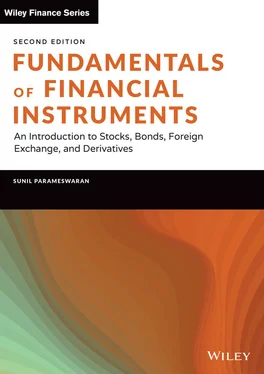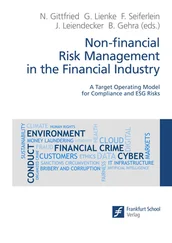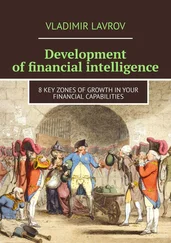One of the advantages of ADRs is that an ADR may offer greater liquidity in the United States than the underlying shares do in their domestic market. Moreover, certain US pension funds and investment managers have a strong preference for ADRs because they are legally required to invest in ADRs while investing in non-US securities. Many institutional investors prefer investing in securities that are listed for trading in the US market rather than investing directly in foreign equity markets.
In order to list its shares on the exchange of a developed country, the issuing company must meet the securities market regulations of the foreign country as well as those of the stock exchange on which the shares are to be listed. This very often requires the company to comply with stringent disclosure norms. For instance, in order to list on the New York Stock Exchange (NYSE), it is necessary to comply with US GAAP (generally accepted accounting principles). For companies based in developing countries, such compliance has ensured more transparency in their operations, leading to the benefit of not just global investors, but also the domestic shareholders. However, after issues like the ENRON collapse, it is arguable as to whether the disclosure norms in the United States are as commendable and effective as once believed. Besides, many other countries have considerably beefed up their security-related regulations to a large extent, as a response to financial scams and scandals.
Foreign listing provides a multinational corporation (MNC) with indirect advertising for its product brands in the foreign market. It also raises the profile of the company in international capital markets, making it easier for it to raise finances in the future, and provides greater mileage for its international marketing efforts. Take the case of an Indian company which is seeking to raise a bank loan in London. It will have greater credibility in the eyes of the international lending community if it were to be listed on an exchange in the developed world. Besides, when a firm's equity is held by shareholders across the globe, the risk of a hostile takeover of the firm may reduce somewhat.
There could be instances where foreign investors put a higher premium on the issue than do domestic investors. This could be the case, for instance, if the foreign market were to have greater experience in dealing with a particular industry. As Geddes points out, there was a flood of issues by international mining companies on the Toronto Stock Exchange in the mid-1990s. 3 This is because it was felt that Canadian investors had greater experience in evaluating shares of such firms.
At times a firm may go in for a global issue because it perceives its domestic market to be too small for an issue of the size it is contemplating. In Europe, for example, this fact has compelled Scandinavian and Eastern European firms to access markets across their borders.
There are two broad categories of ADR programs: sponsored and unsponsored. In the case of a sponsored program, the exercise is initiated by the foreign firm whose shares are sought to be traded in the United States. In the case of an unsponsored issue, the process will typically be initiated by an investment bank in the United States that has acquired shares in a foreign market.
Fungibility means the ability to interchange with an identical item. ADRs may be one-way fungible or two-way fungible. If an ADR is one-way fungible, then a US investor can sell the ADR back to the depository in the United States and have the equivalent number of underlying shares sold in the home country. However, if the ADRs were to be two-way fungible, then an investor could also surrender shares to the custodian bank in the home country and acquire ADRs in lieu. The problem with one-way fungibility is that it makes ADRs less attractive for American investors, because it has the potential to reduce the liquidity and the floating stock of ADRs in the United States. Besides, two-way fungibility is essential to preclude arbitrage opportunities.
What is arbitrage? The term arbitrage refers to the strategy of making costless, riskless profits by simultaneously transacting in two or more markets. This is one of the fundamental principles underlying modern finance theory. One of the basic tenets of finance is the concept of risk aversion; that is, an investor will demand a risk premium for bearing a certain level of risk, and the higher the risk associated with an investment, the greater will be the premium demanded over and above the riskless rate of interest.
Arbitrage may be defined as the presence of a rate of return greater than the riskless rate on an investment devoid of risk or, equivalently, as the specter of a positive rate of return from a trading strategy that entails neither an investment nor an assumption of risk.
Take the case of a city like Mumbai, which has two major stock exchanges, namely the Mumbai Stock Exchange (BSE) and the National Stock Exchange (NSE). Assume that a share is trading at INR 100 on the BSE and at INR 100.75 on the NSE. An arbitrageur will place a buy order for 500,000 shares on the BSE while simultaneously placing a sell order for an equivalent amount on the NSE. Before accounting for transactions costs, he is assured of a profit of  . Considering the fact that he did not have to invest any money and was able to implement the strategy without taking any risk, such an opportunity should not exist.
. Considering the fact that he did not have to invest any money and was able to implement the strategy without taking any risk, such an opportunity should not exist.
There are certain practical issues to be considered while evaluating what looks like an opportunity for free money. First, can the trader make a profit after factoring in transactions costs like brokerage commissions? Most retail investors will have to incur such expenses; however, a securities dealing firm has a tremendous advantage for it does not have to pay such transactions-related charges. Consequently, such strategies that appear infeasible for retail traders may be profitable for institutions.
The second issue is that in this example both the exchanges have a T+2 settlement cycle. That is, if an investor were to trade on a particular day, the payment of cash to the seller and the delivery of securities to the buyer will take place two business days later. Thus, the arbitrageur cannot wait to take delivery on the BSE before giving delivery on the NSE. Consequently, to capitalize on such opportunities a potential arbitrageur needs access to a stockpile of cash as well as a long position in the security right at the outset.
In practice such opportunities will not remain for long. As arbitrageurs start buying on the BSE the price there will be driven up by the increasing demand. Similarly, as they start selling on the NSE, the increased supply will push prices down. After a brief while such opportunities will not be apparent.
In practice such opportunities exist for fleeting moments. They can be exploited by players who are always in the thick of the action such as financial institutions. The issue may be viewed as follows. A mispriced security offers a potential arbitrage opportunity. The possibility of making arbitrage profits ensures that securities are not mispriced in practice. To ensure that such avenues for profit are seized and exploited, traders increasingly rely on automated systems. One well-known type of arbitrage is Stock Index Arbitrage, which entails the exploitation of deviations from the postulated pricing relationship between stock indices and futures contracts based on them. This is not easy in practice, for if we take an index like the Standard and Poor's 500 (S&P), 500 constituent stocks have to be either bought or sold in the right proportions. Thus, the availability of a computer becomes imperative, and consequently the implementation of such arbitrage strategies is referred to as Program Trading.
Читать дальше

 . Considering the fact that he did not have to invest any money and was able to implement the strategy without taking any risk, such an opportunity should not exist.
. Considering the fact that he did not have to invest any money and was able to implement the strategy without taking any risk, such an opportunity should not exist.










